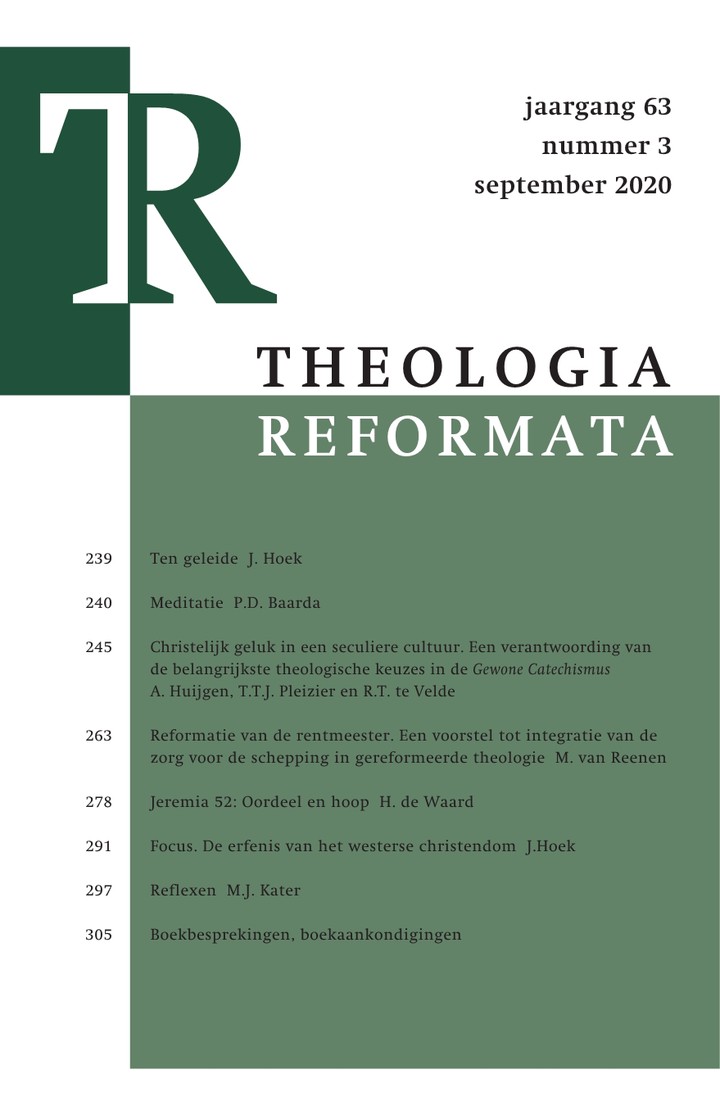Christelijk geluk in een seculiere cultuur. Een verantwoording van de belangrijkste theologische keuzes in de Gewone Catechismus

Samenvatting
In dit artikel beschrijven wij eerst hoe de huidige seculiere context de GC heeft gestempeld, zoals blijkt in de eschatologische toonzetting van de GC en de behandeling van doop en avondmaal (2). Vervolgens wordt belicht, welke theologische keuzes de verdere structuur van de GC hebben bepaald (3). Ten slotte komen theologie-historische aspecten en het confessionele karakter van catechismi aan de orde (4). Dit artikel besluit met een conclusie (5). Gaandeweg zullen we ook ingaan op enkele kritiekpunten die in recensies naar voren zijn gebracht.
De bijgevoegde PDF is een proef-druk. De gepubliceerde versie zal via de DOI-link beschikbaar zijn per september 2022.
English abstract: This article presents an account of the theological choices made in the recently published Gewone Catechismus (Ordinary Catechism). Against the background of secular culture, the GC opts for an eschatological approach that defies hedonism, paradoxically by making ‘happiness’ (‘geluk’) the central theme. The architecture of the GC is explained as a trinitarian framework, under the headers of trusting the Father in prayer, following Christ in obedience to his commandments, and expecting God’s Kingdom through the Spirit. While the GC has no confessional status, like the Heidelberg Catechism, it still is a confessing text, as all theological discourse has confessing implications.